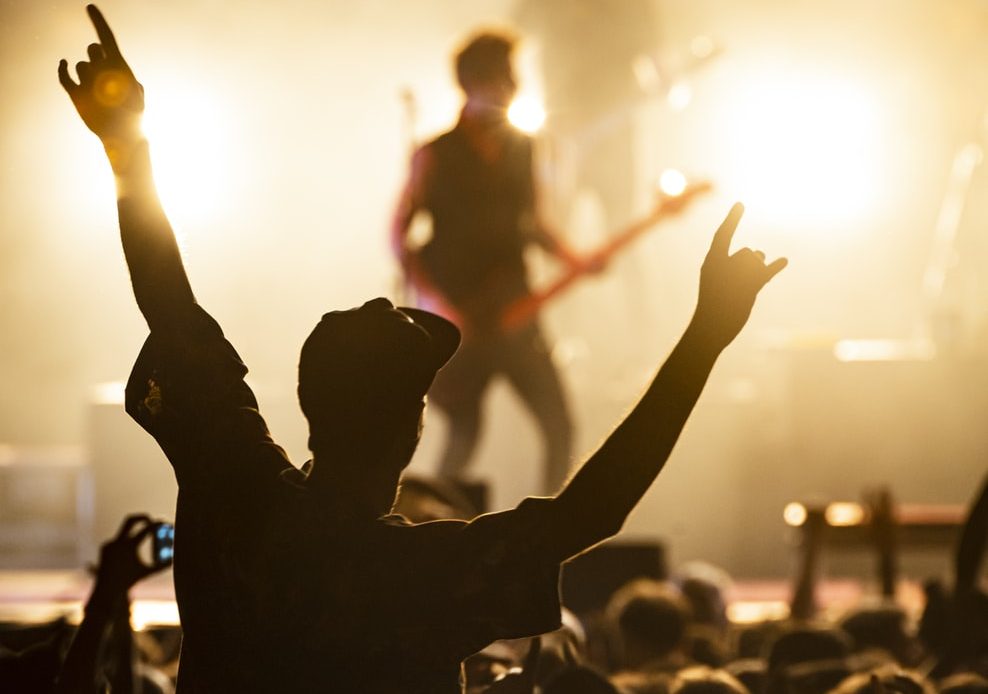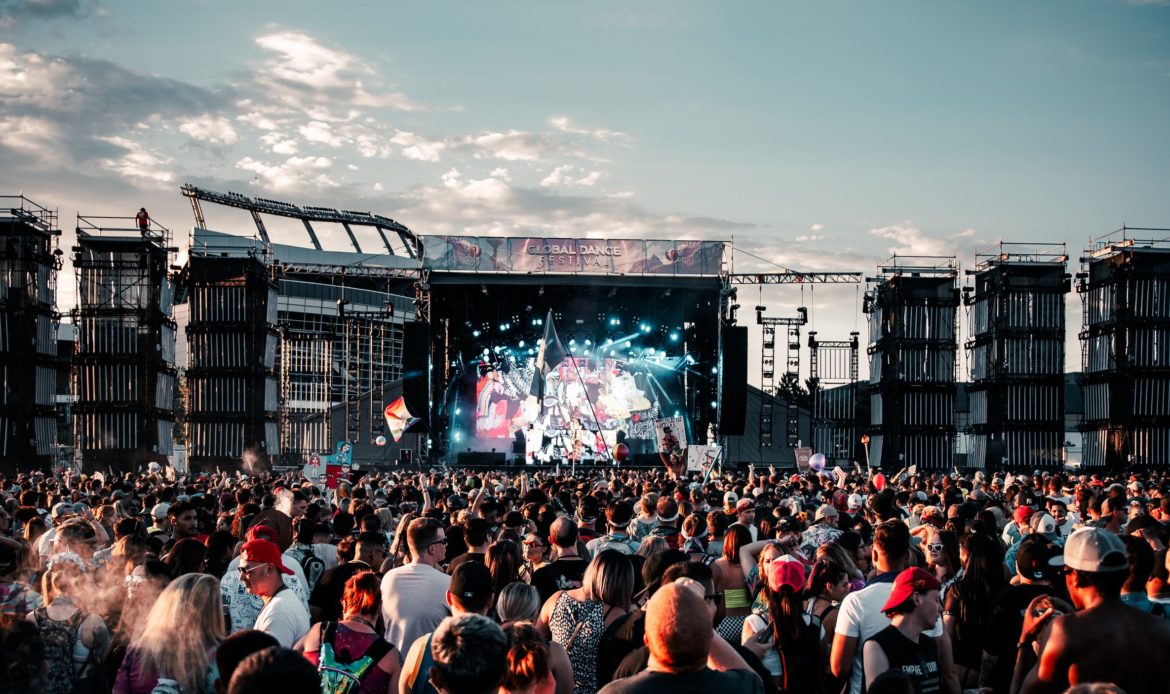Pop Punk Renaissance
Anyone who has had an emo phase in middle school knows that pop punk is the perfect outlet for all your teenage angst. I, for one, blasted “I’m Not Okay (I Promise)” and “Misery Business” through my Hot Topic earbuds on the bus ride home from school. The record label Fueled By Ramen was hugely responsible for the success of the genre, with many popular groups such as Paramore, Fall Out Boy, and Panic! At The Disco under its belt, all of whom often blurred the line between pop punk and emo. However, the genre lost its mainstream popularity in the early 2010s with a shift in interest from guitar-centric music to dance-focused pop radio music, pushing pop punk to the fringes of the music scene.
Part of the appeal of 2000s pop punk was how raw and authentic it was. Bands such as My Chemical Romance and Pierce The Veil were formed by angsty, suburban high school students who held practices in their parents’ garage. Themes focusing on the growing pains of adolescence and a contempt for their suburban hometowns were prevalent in their music, creating a relatability that appealed to teens all across North America. These bands often rose to fame in an organic way: they made music, distributed it — without necessarily seeking to get famous — and got discovered by record label executives. Their do-it-yourself ethic shone through in their music and in their aesthetic, often coming off as a “screw you, we’re doing our own thing, and we won’t conform to your standards”.

Modern pop punk has adopted many characteristics from 2000s pop punk. Many songs focus on the same themes — teenage love and heartbreak, not conforming, and the coming-of-age struggles — packaged up and laced with typical teenage angst. Take Olivia Rodrigo’s “brutal” for example: “I’m so sick of 17 / Where’s my fucking teenage dream? / If someone tells me one more time, ‘Enjoy your youth’ / I’m gonna die”. With the world looking bleaker by the day, combined with insecurity and FOMO brought on by social media, as well as quarantine and having to spend the so-called “best years of your life” locked inside your bedroom, it is easy to see how pop punk and its themes have reclaimed its spot in the mainstream and propelled to the upper ranks of the global charts. Anybody, especially teens, can relate to the feeling of being exhausted, being tired of being optimistic and pretending that everything is fine, and being mad at yourself and the world. People gravitate towards music that encapsulates all those feelings, so naturally, the remedy is to blast angsty music, music you can scream to.
The pop punk themes of the early 2000s remain the same today. Teenagers are still spearheading the genre and it still, for the most part, sounds like pop punk. So what makes modern pop punk different? The genre has always embraced and showcased their non-conformist ethos and DIY ethic, indirectly placing an emphasis on the messiness and chaos of adolescence. Now, most things are carefully crafted, from album rollouts and marketing, music videos, and even the artist’s aesthetic and image. This meticulous curation often appears inauthentic, using the artist as a vessel to carry out a marketable, sellable image rather than the artist having the creative freedom to do things their own way — a direct contrast to the style of the 2000s. Record executives know what will sell, and right now, that is the pop punk, e-boy, “alt” aesthetic popularized by TikTok and its stars, with social media personality Lil Huddy leading the movement. The app is largely responsible for the recent explosion of the genre, with 15 second snippets of pop punk-esque songs like “good 4 u” and “Happier Than Ever” often going viral. Because of the role of social media, the genre is becoming increasingly accessible and palatable to a wider audience. It is still playing with darker themes and aesthetics, but is giving a more radio-friendly twist, which one might argue, directly violates the anti-consumerist and non-conformist values of pop punk.

To add insult to injury, it seems as though there are hardly any pop-punk artists in the mainstream music scene who have come up entirely by themselves. Olivia Rodrigo was a Disney star, and Willow Smith and Billie Eilish have both had massive financial and industry backing. There is no denying their immense inherent talent, but to say they rose to fame completely on their own would be a lie. Nevertheless, it is a significant step forward from the typical image of the 2000s pop-punk scene. The genre was saturated with people who looked a certain way — namely, white and male. Female pop punk musicians were rare, musicians of colour were even rarer, and it was practically impossible to find a female pop punk artist of colour. Today, acts like Meet Me @ The Altar, an all-women of colour band, and Pinkshift, with a female South Asian lead vocalist, are leading the way and carving out a more diverse and inclusive space for young people to push the boundaries and conventions of pop punk.
The rules are bending and breaking, and that is an amazing thing to witness— experimentation and innovation is what is moving the genre towards a more renewed, revolutionary version of itself. A notable example is the recent alliance between pop punk and hip hop. SoundCloud emo rap artists Juice WRLD, Lil Peep, and XXXTentacion planted the seeds for this dynamic alliance to blossom, with music critic Al Shipley describing punk rap as a “commercial juggernaut”. It has certainly earned that title, with Machine Gun Kelly’s guitar-driven album Ticket to My Downfall charting higher on the Hot 100 than any of his previous albums, as well as 24kGoldn and Iann Dior’s emo rap song “Mood” securing the top spot on the chart. Artists like Machine Gun Kelly, Willow Smith, YUNGBLUD, and Olivia Rodrigo are expanding the horizons of what is “allowed” to be considered popular. Even streaming platforms and TikTok, despite their issues, do serve as a gateway for a wider audience to dig deeper into the genre and step out of their music comfort zone. Pop punk certainly is not dead, but in order to keep it alive we need to look further than the chart-topping acts. Returning to the very fundamentals and original ethos of the genre by uplifting small artists from the grassroots pop punk scene who are doing boundary-breaking, innovative things is what will ultimately sustain the genre’s revival.